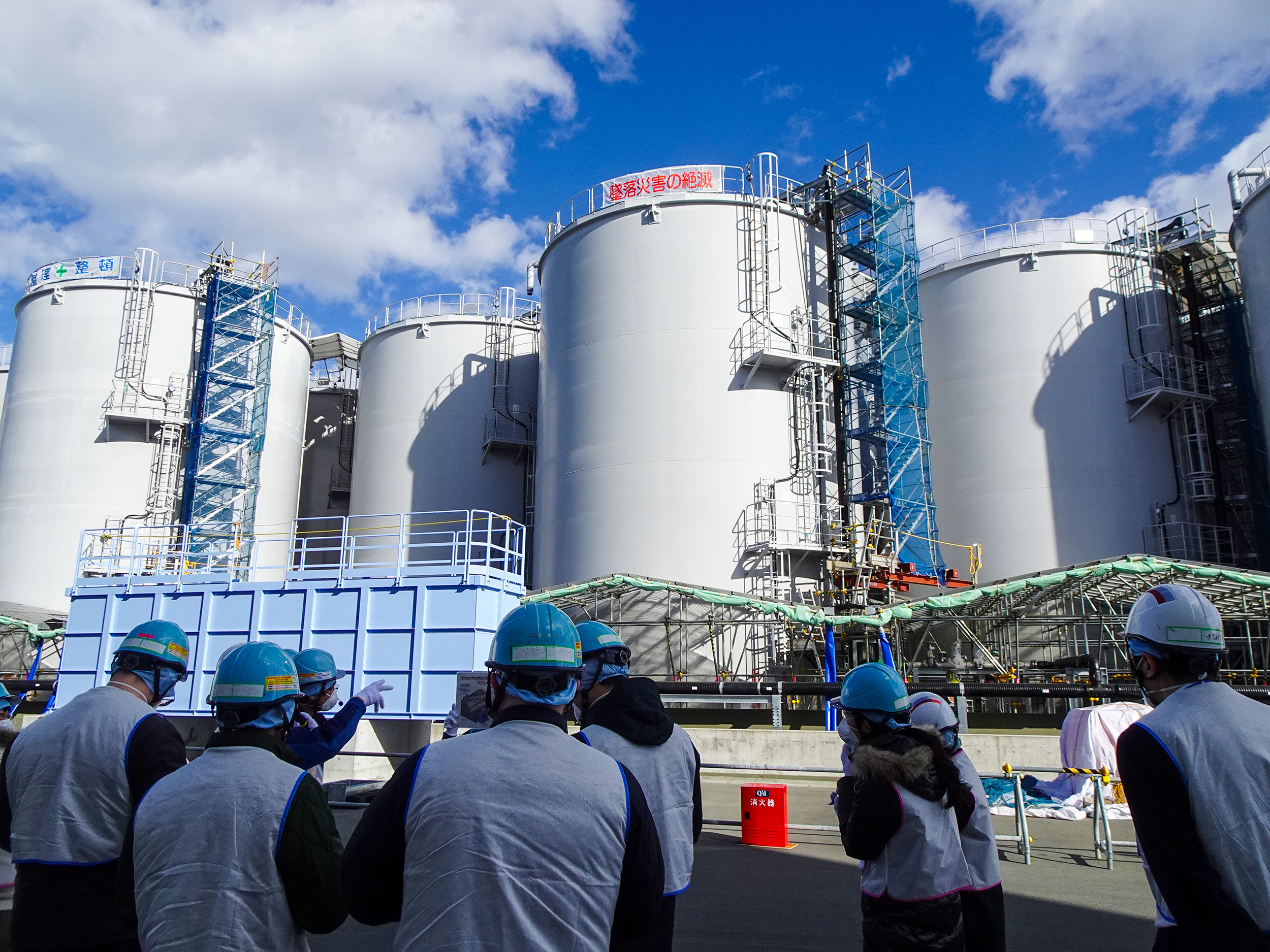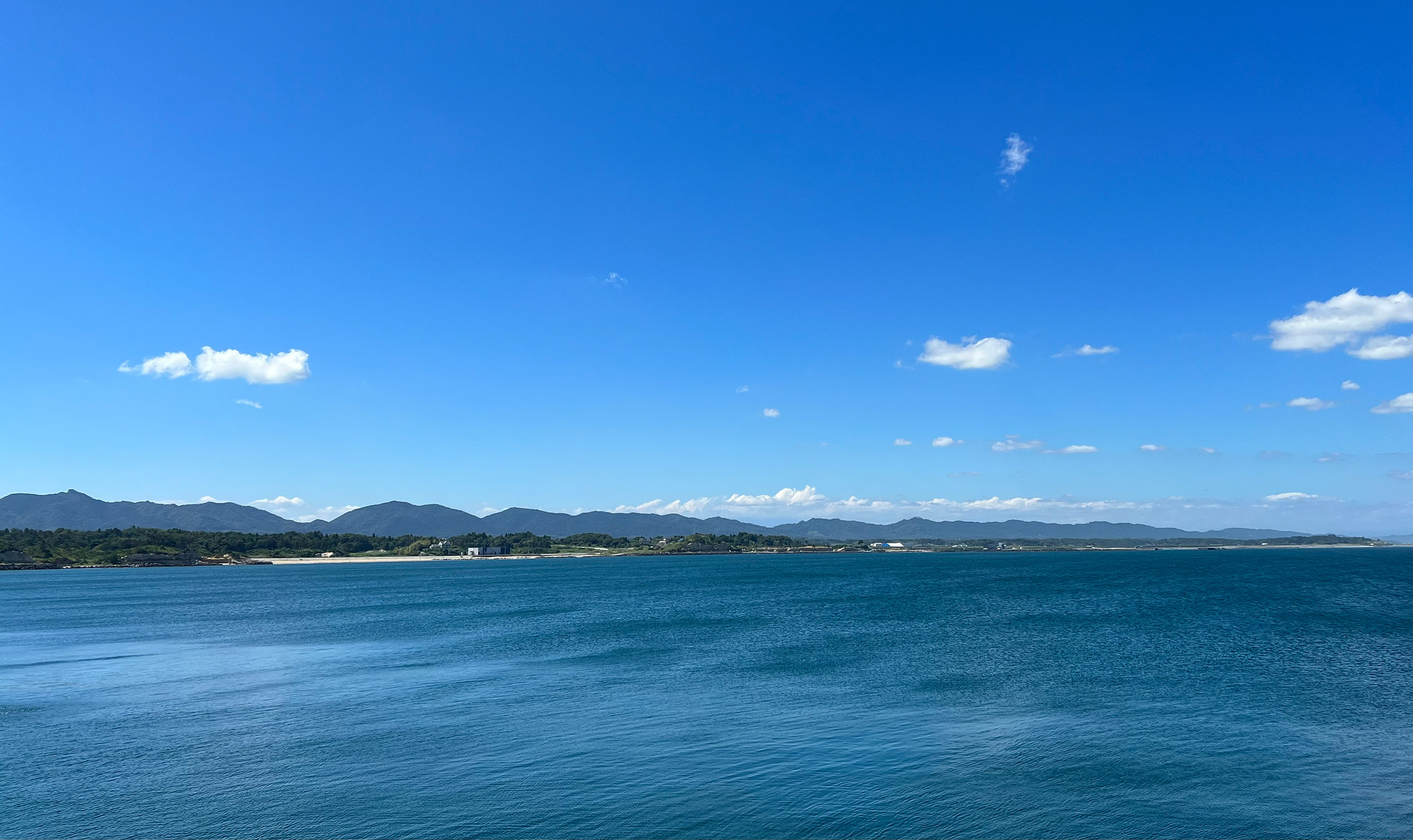Issue:
October 2023
Public mistrust of Tepco and the government opened the door to China's campaign of alarm and disinformation

The gradual dilution and release into the ocean of 1.3 million tons of radioactively contaminated water stored in tanks at the Fukushima Daiichi nuclear power plant, which began on August 24, had been planned for years. From the time it was first proposed by a Japanese government committee in 2016, the release plan has sparked opposition and misunderstanding, both in Japan and internationally.
Radiation issues are almost invariably subject to misinformation, partly because emotional reactions and fears can overwhelm cool-headed evaluation of the facts. To communicate the issues to the public accurately requires scientific literacy, as well as sensitivity to the justification for public concern, which usually extends beyond the science. These are all too often lacking, even among professional journalists and official spokespeople. The March 2011 Fukushima Daiichi disaster was accompanied by a massive and prolonged surge of misinformation from many directions. As lead researcher for Safecast, I have spent a lot of time fielding questions from people around the world who are concerned about the risks Fukushima radiation poses to their lives and those of their loved ones. It was frustrating to see how misinformation and disinformation circulated through social media, much of it targeted at vulnerable people. Debunked stories never stayed debunked.
Before long, it became possible to separate Fukushima-related misinformation and disinformation into categories based on source and intent. A lot of it was motivated by money — harvesting clicks, or linking to scam radiation cures. Some was intended to further ideological agendas — anti-nuke on the one side, pro-nuke on the other. In many cases, it was done for amusement, simply to see how many people would fall for outrageous claims. And some, like that circulated for several years after the start of the disaster by Russia Today, was clearly politically motivated, intended primarily to foster mistrust in Western institutions.
In the run-up to the recent Fukushima water discharges, some of the same alignments became apparent in media commentary. There are well-meaning but not fully informed articles, and others which simply parrot official Tokyo Electric Power (Tepco) talking points. Good scientists have published accurate and nuanced articles that strive to place problematic issues in context. There has been a lot of opposition to the releases voiced by political and environmental groups in Japan and abroad, some of it well-informed, some not. The single most distinguishing factor in recent media commentary about the releases, however, has been the coordinated disinformation campaign by Chinese state media. For such a contentious issue as the release of radioactive water, it was necessary for Japan to implement a meticulously truthful approach that goes beyond mere legal requirements and includes stakeholders, including neighboring nations, in the decision-making process. That didn’t happen, unfortunately, and so the Japanese government and Tepco gave its adversaries an opening they could exploit for geopolitical gain. This was entirely predictable.
It should have been avoidable, as well. As the International Atomic Energy Agency (IAEA) has plausibly confirmed that if Tepco does what it promises to do, consistently and without major mishap for the 30 to 40 years the releases are currently expected to require, the additional radiation doses to even the most affected humans in and near Japan will be very low - less than 0.01 microsieverts (µSv) per year. South Korean researchers have said that effects there will be unnoticeable. This small risk should be fully acceptable to the public. Fukushima seafood is carefully monitored for radiation and is safe to eat - demonstrably safer than seafood from any other country in the region, in fact, because of how thoroughly it is tested. There is little reason to suspect that Japanese seafood will be less safe due to the upcoming releases. So what is the problem?
The core issue, both at home and abroad, is that TEPCO and the Japanese government both suffer from a tremendous deficit of trust on Fukushima issues, but their decision-making process does not reflect that. Tepco and the government should have tried to set an appropriate precedent that would positively shape worldwide expectations about how to best address public concerns regarding these kinds of releases. International agreements such as the London Convention and United Nations Convention on the Law of the Sea (UNCLOS), stipulate that neighboring states which may have plausible concern of being affected should be adequately consulted prior to any ocean release of pollutants such as radioactive material. Agreements such as the Aarhus and Espoo conventions, to which Japan is not a signatory but whose guidelines serve as de facto international best practices, as well as policies promoted by the OECD/NEA, of which Japan is an influential member, clearly lay out the obligation to consult with all stakeholders, including neighboring states, prior to making such decisions. Japan seems to have very narrowly interpreted its obligations under these agreements, in a way that fails to honor their spirit or foster their long-term goals. Skepticism is warranted that a nation like China, with its own extremely tarnished environmental history and noted lack of transparency, would be prepared to play a constructive role here. Nevertheless, the Chinese should have been consulted prior to the decision. This lack of adequate consultation predictably became a cudgel that China and other adversaries are now using to pummel Japan.

Bear in mind that although many good scientists have valid questions about the impacts of the releases and their oversight, they agree that measurable effects will likely be confined to areas near Japan. No credible researcher considers the risks to humans to be high. Chinese state media, however, has persuaded its captive audience that Japan’s actions are an active threat to the ocean and to the lives of Chinese and other people. China implemented a total ban on seafood from Japan in late August, even though its own fleet is catching fish in Japanese economic waters and selling it as “Chinese” produce. Western media outlets, for their part, have devoted a lot of space to reporting on the Chinese disinformation campaign, often noting that it is not rooted in scientific evidence.
Chinese headlines and articles have been apocalyptic and hyperbolic, screaming words such as “poison,” “lethal,” and speaking of “environmental terrorism”. One highly-watched China Global Television Network (CGTN) video is titled “Godzilla in the water: Fukushima release effects uncontrollable, unpredictable, dangerous.” Another article on the same outlet proclaimed that more than 1 million fish had died in South Korea as a result of Japan's release of Fukushima nuclear-contaminated water. Further down the article, it admits that these fish died in storage because they had been left unsold.
A deluge of Chinese news articles, broadcasts, and social media posts echoed similar alarmism. Confronted with this multi-pronged hostile campaign, the Japanese government reportedly went so far as to quietly hire the Israeli intelligence service provider 9500 Group to covertly investigate and mitigate its influence. We don’t yet know what effect these efforts have had or why the government felt it needed the assistance.
Disinformation is not always pure falsehood. Regarding the Fukushima water, Chinese state media has been using the technique of building a sense of alarm around a kernel of truth, amplifying legitimate concerns without providing important context or revealing the fact that the information is being released in a highly controlled and coordinated fashion under political direction and in service of a specific agenda. It is true, for instance, that despite repeated claims from the Japanese government and Tepco, the Alps purification system failed to remove all radionuclides besides tritium as promised. Currently about 60% of the tanks additionally contain high levels of strontium-90, carbon-14, ruthenium-106, technetium-99, and iodine-129, among others. Tepco and the government deserve criticism for not being more up front about this and for clinging to the “only tritium” talking point, too often unquestioningly repeated by journalists. Tepco has promised to reprocess this water until it meets regulatory requirements, but has not presented a clear plan for completing this important task. Nor has it made a full inventory of what is actually in the tanks, expecting the world to simply take its word. Nevertheless, the concentrations of these radionuclides are expected to be extremely low by the time they are released. They should be appropriately monitored, but Chinese claims that they are “lethal” in this context are ludicrous.

Aproximately a week after the releases began on August 24, a CGTN news article alarmingly announced that tritium concentrations of 10 Bq/L had been detected in water offshore of Fukushima Daiichi. As others have noted, the article did not provide important context that this is several orders of magnitude lower than both Japan’s 700 Bq/L drinking water limit and the World Health Organization’s 10,000 Bq/L limit, or that China itself is so unconcerned about its citizens consuming tritium that it doesn’t even have a limit for it in drinking water. Further, a quick fact check would show that the mean surface water concentration of tritium near East Asian nuclear power plants, including those on China’s coastline, is over 8 Bq/L. In other words, the Fukushima data was a sign of normalcy. Chinese media consumers are not given this kind of context, however. In June of this year, the Japanese ministry of foreign affairs released information showing that South Korean and Chinese nuclear power plants regularly emit more tritium than Tepco plans to release from Fukushima Daiichi. Chinese media watchers I have spoken with are certain that this kind of nuclear power-related data is unavailable to ordinary Chinese citizens, so they are unable to fact check official claims.
It’s important to point out, however, that the comparison of tritium released from normally operating power plants with that from the destroyed Fukushima Daiichi is deceptive. Normal operation, where releases are predicted by the design and tritium generation is fully controlled, should not be compared with Fukushima Daiichi’s long-term emergency, even if the tritium numbers are comparable, mainly because of the “cocktail” of other radionuclides present in the Daiichi water. That’s why I wince when articles intended to refute disinformation on this issue repeat the canards that the Fukushima Daiichi water only contains tritium, and that similar tritium releases are normal for operating NPPs. Admittedly, it is challenging to present this accurately when writing for the general public. But it is incumbent on all of us to get this right and place responsibilty where it is due.
As I have noted previously, the most important issues surrounding the Daiichi water releases are not technical or safety related: “What will the impacts be if the water releases are carried out according to plan?” Rather, they concern transparency and oversight: “Given the history of mistrust and misinformation, how can the public have confidence in the official information used to state that all is well?” Japan has earned the world’s respect in so many ways, but most of the criticism it is now facing is of its own doing. Only half-steps have been taken towards transparency, and China has been able to drive a wedge into these gaps and stoke wildly disproportionate public alarm. It’s painful to see short-sighted Japanese failures on the Fukushima water release issue lead to such wide-reaching negative consequences. It didn’t have to be this way. If experience is any guide, one thing we can be sure of, though, is that the disinformation currently being spewed won’t stay debunked, but will persist and recirculate for years.
Azby Brown is a native of New Orleans, and has lived in Japan since 1985. He is Lead Researcher for Safecast, a global citizen-science organization begun following the start of the Fukushima disaster in 2011 to promote open and trustworthy environmental monitoring. He has written about the Fukushima water release issue frequently since 2015. He represents Safecast at the IAEA, OECD/NEA, and other prominent radiation policy forums. In addition, he is the author of several influential books on Japanese architecture, design, and environmentalism, including The Very Small Home (2005), Just Enough: Lessons in living green from traditional Japan (2010), and The Genius of Japanese Carpentry (2014).

